Your best bet for late-season container color? Annuals! And many summer plants will reward you with garden color all summer long and right into fall. Here are a dozen easy-growing favorites for you to try.
Late Summer Container Plants
1
/
9
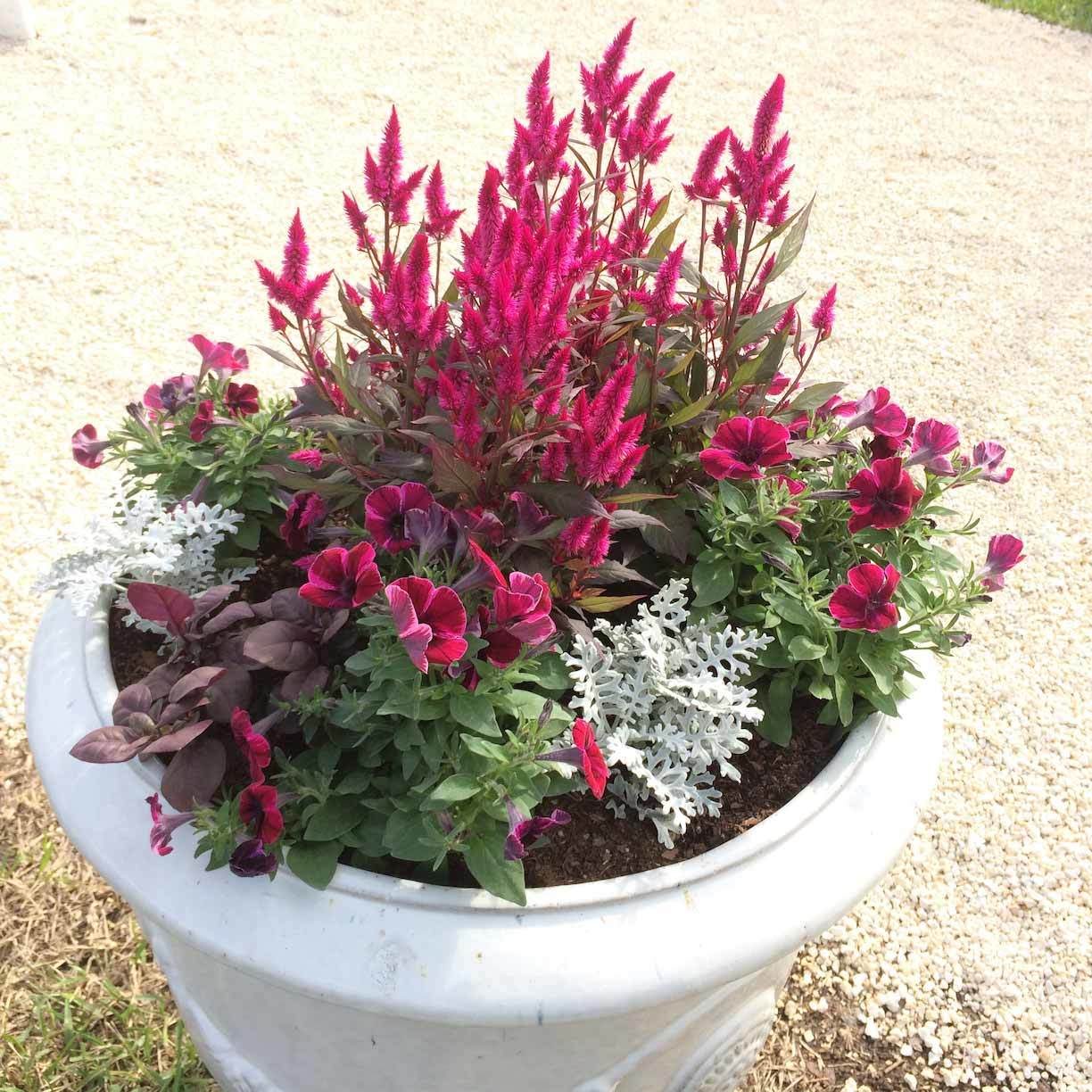
Celosia
Celosia, sometimes called cockscomb, is a great annual flower that holds its color well even in the dog days of summer. These summer plants grow from 10 inches to 2 feet tall and feature either green or bronze foliage. Flowers come in a range of colors and two primary shapes: crested blooms like a rooster's comb and feathery spikes like those shown in the photo, with petunias and dusty miller.
Photo: Luke Miller/Oldsmobile Trees
2
/
9

Petunias
Petunias are a heat-loving annual that go full blast into fall. Flowering sometimes slows down in late summer but you can coax more show from summer plants by not only removing the faded trumpet-shaped flowers but pinching off the seedpods as well. This, along with plenty of water and sunshine, will keep petunias going until a hard freeze. Flowers come in almost every color, and some bring their own contrast with bicolored blooms. These purple petunias are shown with lavender and Diamond Frost euphorbia.
Plus: 12 Must-Have Gardening Tools
3
/
9
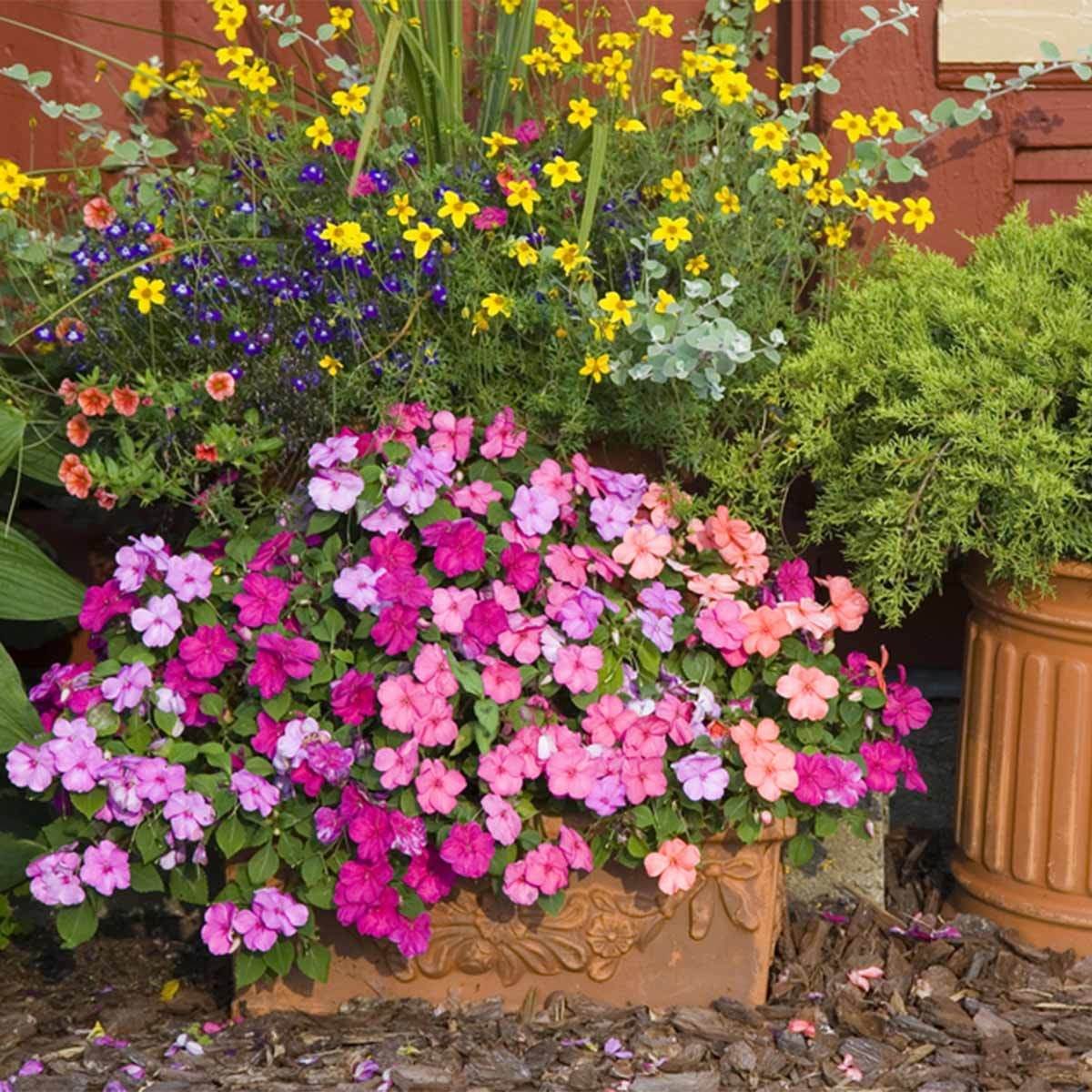
Impatiens
These pink and magenta impatiens are hard to miss, which is sort of the point. No wonder they're a mainstay in shade gardens, where color can be tough to come by. Keep them well watered and fed and they'll reward you with nonstop bloom. They're also self-cleaning, meaning they drop their faded blooms without deadheading. Recently, bedding impatiens have experienced some fungal disease problems in some areas of the country, but New Guinea impatiens can be substituted where that is a concern.
Plus: Garden Tool Storage Ideas
4
/
9
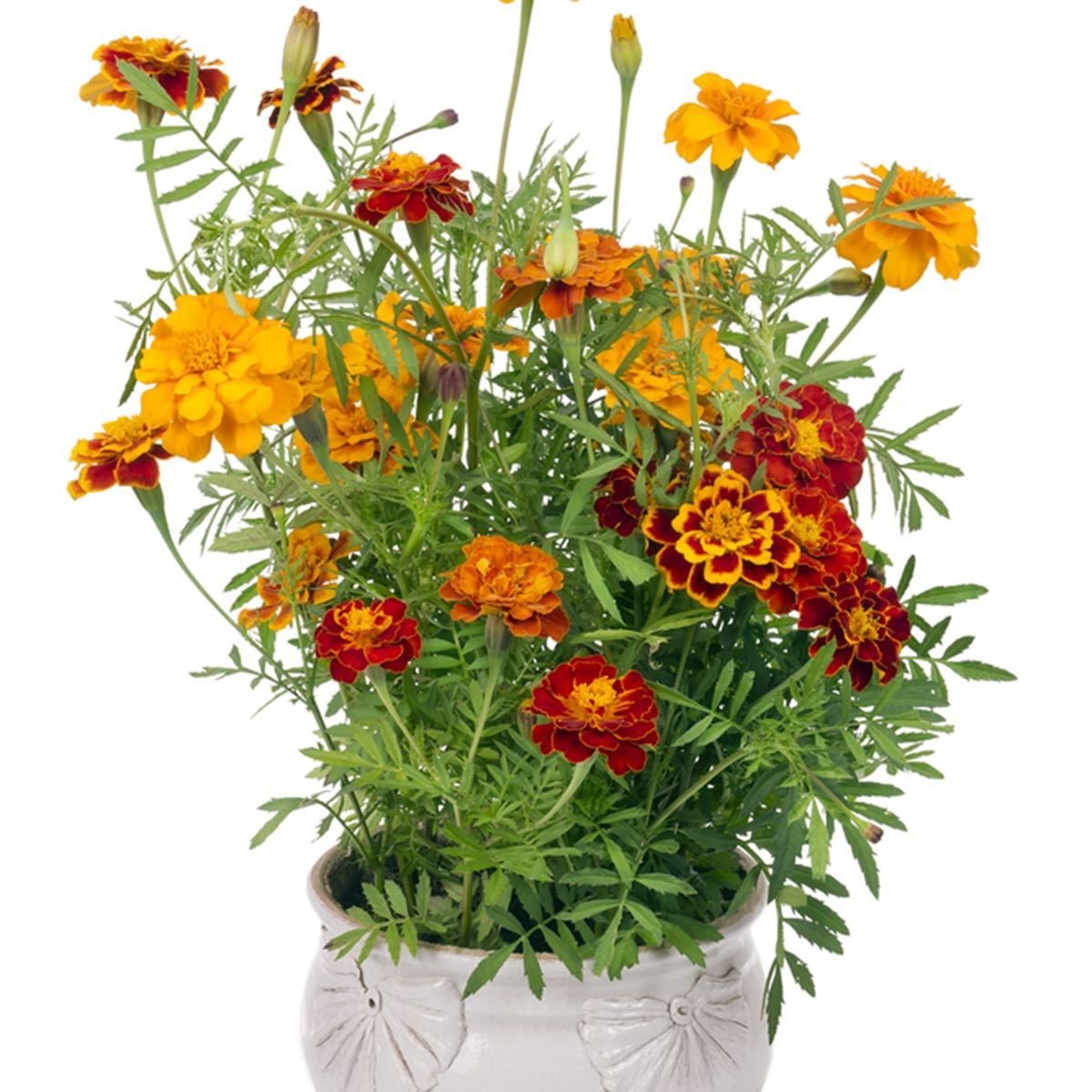
Marigolds
Perhaps the easiest bedding annual to propagate is also the easiest bedding annual to grow. Marigolds need little more than water and an occasional shot of fertilizer. Regular deadheading (just pinch the faded flowers between thumb and forefinger) will keep these colorful stalwarts blooming until a hard freeze. Let a few flowers go to seed in fall and you'll end up with a new batch of marigolds next year.
Plus: Home Gardening: Easier Weeding and Watering
5
/
9
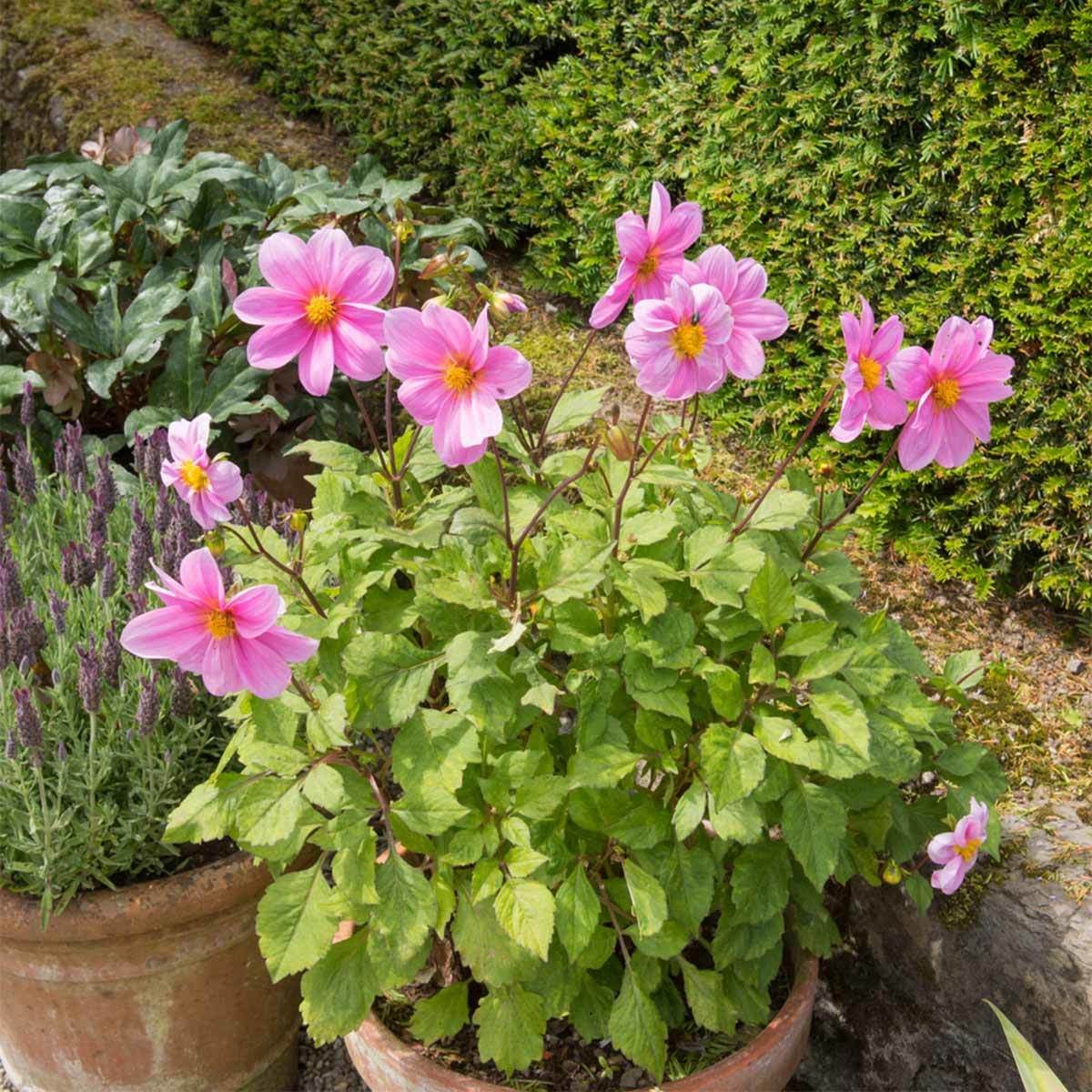
Dahlia
Dahlias are tender bulbous plants that hit their summer plants stride in late summer. They come in a wide range of flower colors and plant heights, so they can fit into most garden situations. Taller dahlias should be staked, but shorter varieties can support themselves. Keep these summer plants deadheaded and they'll bloom until frost. Where winters are cold, dig up tubers after a killing frost and store them in sawdust or peat moss in a cool, dry area. Replant in spring.
Plus: Build a Simple Raised Patio Planter
6
/
9
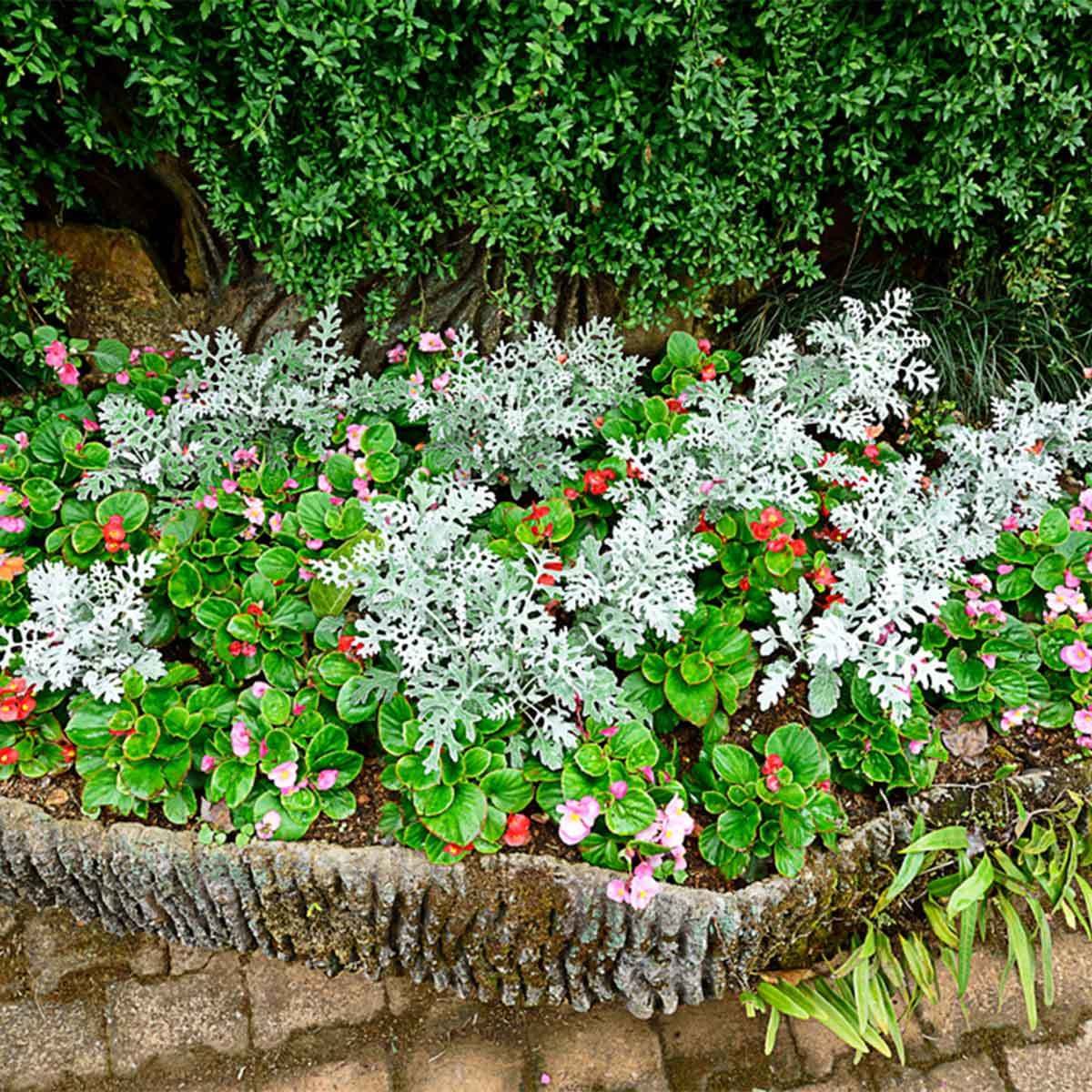
Begonias and Dusty Miller
Here's a nice combination that won't peter out any time soon. The silvery foliage of the dusty miller makes a great companion for the diminutive wax begonias, helping catch the eye from a distance. The begonias, meanwhile, do their best work up close, where they can better be admired. They're neat and compact—often under 6 inches in height—and they don't require deadheading or pinching.
Photo: How to Build Patio Planters
7
/
9
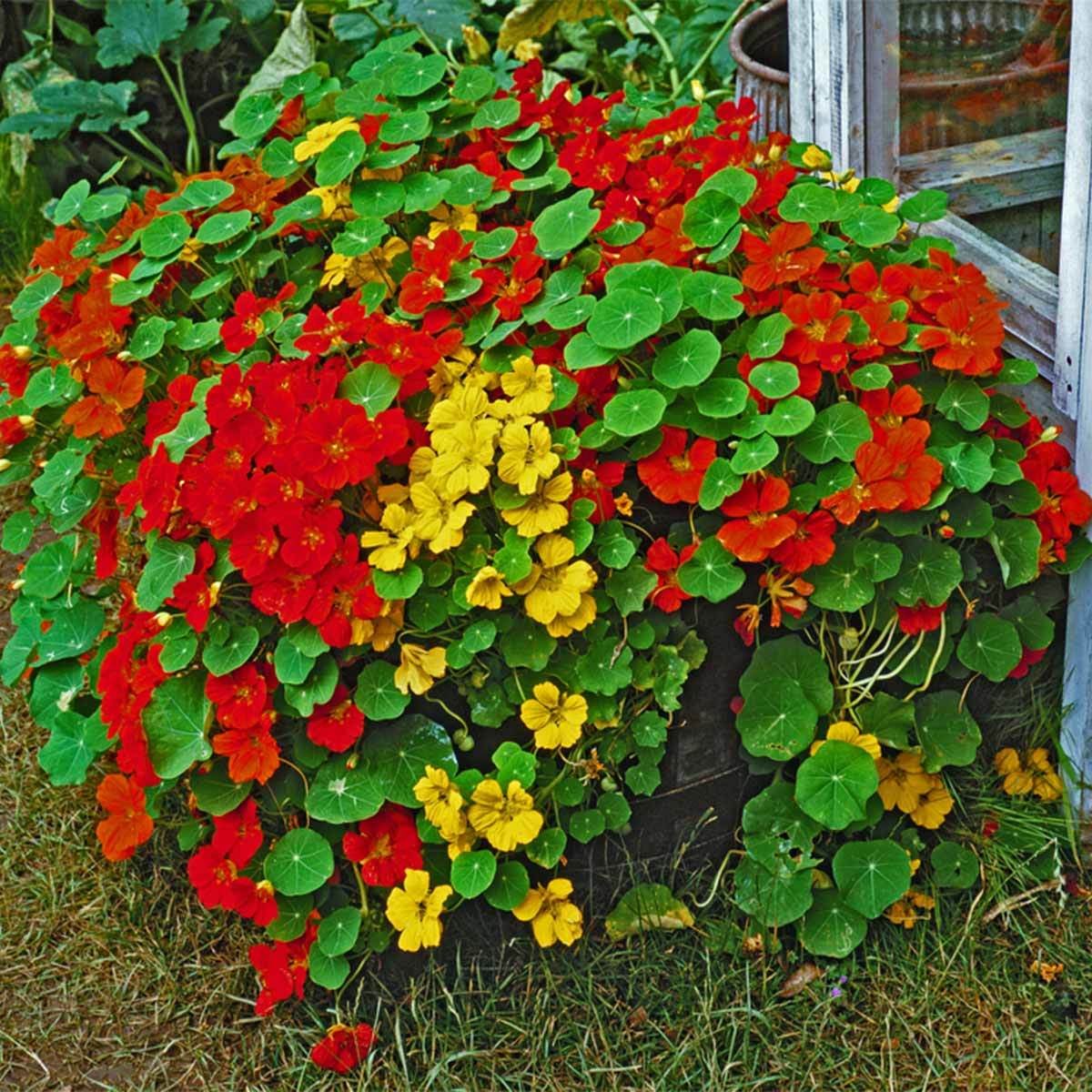
Nasturtium
Tough and wiry nasturtium is also bright and festive. Check out the vibrant red and yellow varieties shown here. Nasturtiums are also available in orange. If the flowers aren't enough, the bright green, rounded leaves and their intriguing markings ought to do it. This is an old-time favorite, regaining popularity because it takes poor soil in stride. Nasturtium looks great spilling from containers, but it can also grow upwards if given support.
Plus: Build a Classic Cedar and Copper Trellis
8
/
9
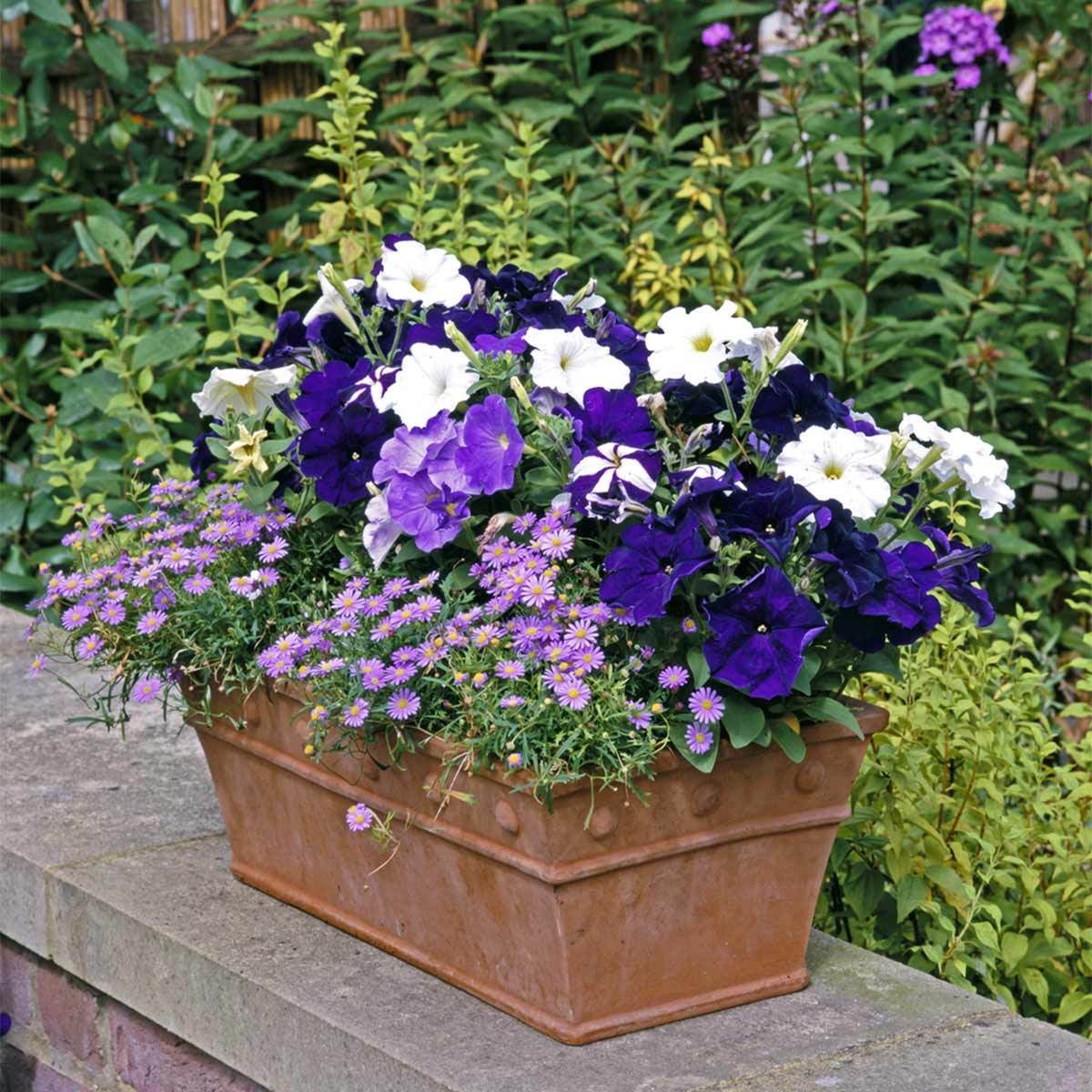
Petunias with Asters
As noted earlier, petunias are a bright addition with a lot of staying power. They can work on their own—especially when two colors are mixed for contrast such as the purple and white petunias here—or they can be paired with a companion. In this case, the lucky companions are asters, a late-summer/early fall bloomer. What's nice is even after the perennial asters are done blooming, the annual petunias keep going until a hard freeze.
Plus: Build a Three-Season Planter Box
9
/
9

Coleus and Canna
While both indeed produce flowers, coleus and canna are more beloved for their foliage. Coleus is a rounded plant with colorful leaves in brightly variegated patterns. Canna is an upright plant with large, extremely bold leaves. The effect is quite tropical looking, especially with flowery companions thrown into the mix. Coleus is an annual, while canna is a tender plant with bulblike corms that can be dug up in fall and overwintered in sawdust or peat moss in a cool, dry area.
Plus: One-Day Patio Garden Pond
Discover these expert tips to transition your flower pots from summer to fall.



















